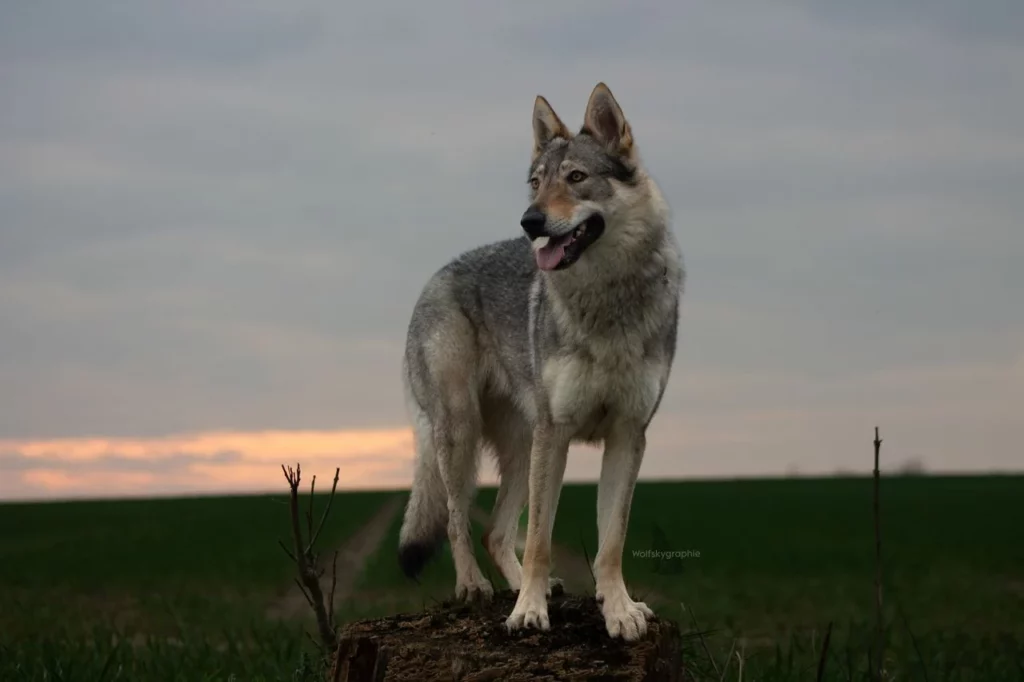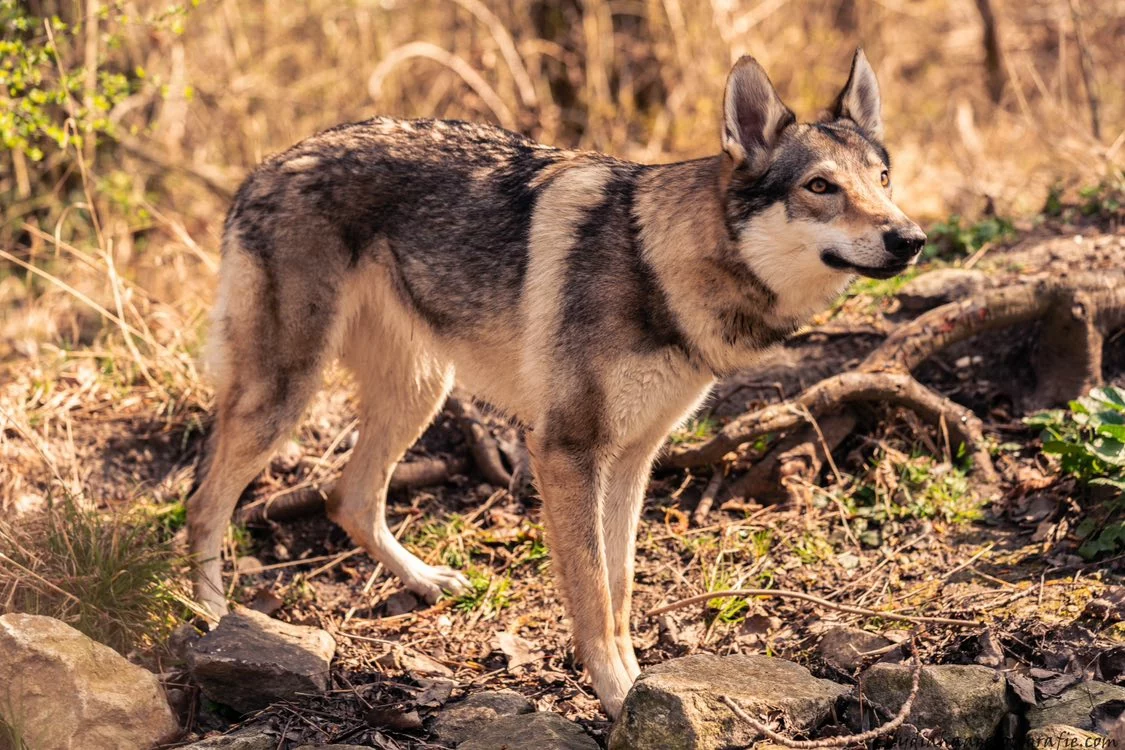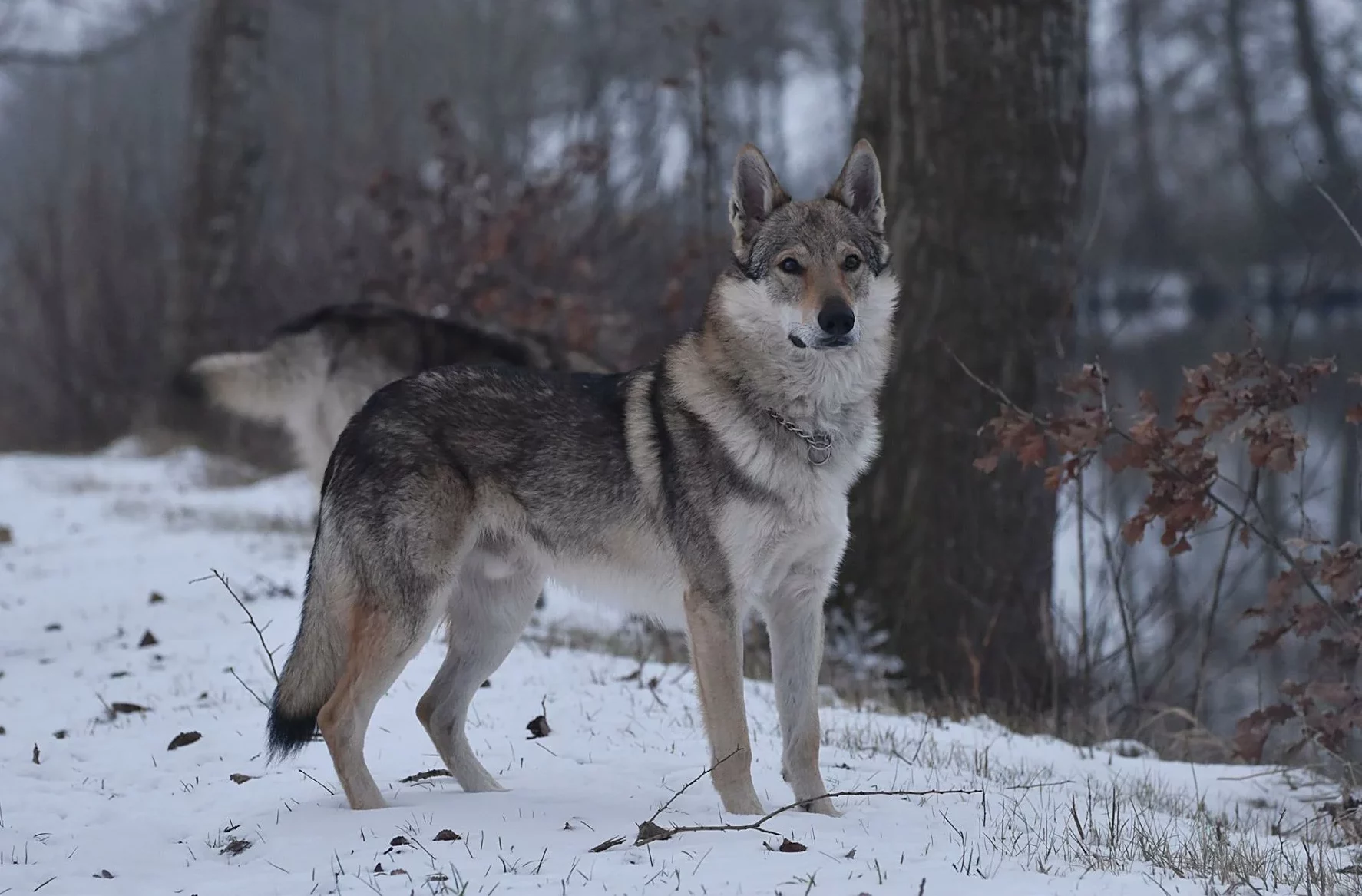Height
min. 60cm

The Czechoslovakian Wolfdog has its origins in the former Czechoslovakia.
As part of the border guard organisation, attempts began in 1955 to breed German shepherd dogs with wolves in order to create service dogs that were better adapted to the conditions of Czechoslovakia with its heavy snow and extreme cold.
Under biologist Karel Hartl, Carpathian wolves were mated several times with German shepherd dogs, both females and males. A total of four wolves were used.
The first litter was born in 1958 and while the first generation (F1) already showed a certain degree of trainability, the wolf’s tendency to flee and shyness was also clearly evident.
Selected wolf-dog offspring were subsequently mated with German shepherds or with each other.
The last wolf crossbreeding took place in 1983.
From the fifth generation onwards, some of the dogs could be used as service dogs in the army, but only on condition that they were intensively socialised with humans from a very early age.
The majority of the dogs were not fit for service and showed mistrust and shyness towards strangers.
As the army was not satisfied with the results of the project, it abandoned it and breeding almost came to a standstill after 1971.
Lovers of the dogs founded the Czechoslovak Wolfdog Club in 1982 and resumed breeding. They were provisionally recognised by the FCI in 1989 and finally in 1999.
The Czechoslovakian Wolfdog is an active, persistent breed with a fearless and courageous nature. They are family orientated and very loyal and devoted to their owners. They are sceptical of strangers and can show a certain degree of ignorance, reserve and even open mistrust.
Due to their breed origin, they are quite territorial and vigilant, which can manifest itself in a slight forward tendency in situations that appear threatening to the dog.
Due to their eagerness to work, they can easily be motivated for various activities, but it must be remembered that they can also be quite independent and stubborn at times.

The Czechoslovakian Wolfdog is a large, wolf-like dog with a height at the withers of at least 60 cm in bitches and at least 65 cm in males.
The head should be strong and have a blunt wedge shape from the side and above. Males and females should be clearly distinguishable by their heads. The eyes should be slanted, narrow and amber in colour. Lips and eyelids are tight. The ears are set medium high, triangular and rather thin.
Czechoslovakian Wolfdogs have the well-muscled body of an enduring worker with a straight, firm back and a slightly sloping croup. The chest should be strong, the belly line taut and slightly tucked up. The tail is set high and is carried hanging straight down when relaxed and crescent-shaped when excited.
The coat is close lying, winter and summer coats are different. The coat is generally double, with a firm, medium-length topcoat and a dense, soft undercoat. Czechoslovakian Wolfdogs are found exclusively in wolf grey. Here the colouring varies from red-brown to silver-grey.

The Czechoslovakian Wolfdog is basically a healthy, long-lived breed.
Many dogs reach an age of over 12 years.
Most of the diseases that occur in the breed are testable and therefore easy to control.
Typical genetic diseases are DM and HZ.
An examination for HD and ED is also important, as with all large dog breeds. In addition, an eye examination should be carried out before each litter to rule out diseases such as PRA and cataracts.
Czechoslovakian Wolfdogs do not require extensive grooming.
The coat is robust and self-cleaning. They should only be brushed regularly during the twice-yearly shedding period to remove loose hair.